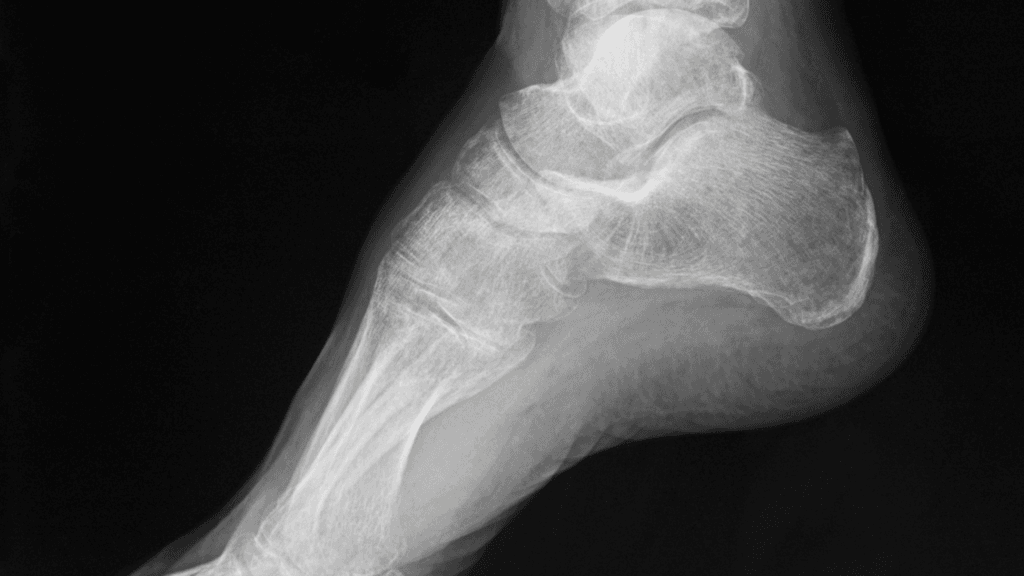Do I Have a Heel Spur?
Debunking the Heel Spur Myth: What's Really Causing Your Heel Pain
Unless your healthcare provider has X-ray vision like Superman (complete with cape and outside underwear), they can't diagnose a heel spur just by looking at your foot. Only an X-ray can confirm if a heel spur is present, and even then, the spur rarely causes your heel pain.

Understanding Heel Pain and Spurs
Heel pain has numerous causes, which is why consulting a podiatrist at Waikato Podiatry Clinic is crucial. We specialise in diagnosing and treating heel pain every day.
Did you know? If you randomly X-rayed 100 people's feet, many would have heel spurs without experiencing any pain. The presence of a spur doesn't automatically mean you'll have discomfort.
A more accurate term for a "heel spur" would be "traction spur," as it develops in the direction that muscles pull away from the heel bone.
Common Symptons Of Heel Pain
- Morning pain: Sharp, stabbing pain with the first few steps after waking up
- Post-rest discomfort: Increased pain after sitting or being inactive for extended periods
- Pain that improves with activity: Discomfort that initially eases as you move around
- Tenderness: Specific points of pain when pressing on the heel
- Swelling or redness: Visible inflammation around the painful area
- Pain that worsens throughout the day: Especially after prolonged standing or walking
- Difficulty walking barefoot: Increased discomfort on hard surfaces without footwear
- Pain climbing stairs: Particularly when pushing off with the affected foot
- Limping or altered gait: Changing how you walk to avoid pressure on the painful area
How Heel Spurs Develop 
The plantar fascia (a band of tissue on the bottom of your foot) attaches to your heel bone. When this tissue tears away from the bone, it creates micro-bleeds. Over time—years, not weeks or months—these areas harden and can develop into spurs.
Many of our patients report intermittent heel pain for years before seeking treatment. These are often the patients who develop spurs after multiple minor injuries to the area.
The Real Culprits Behind Heel Pain
While heel spurs exist and are common, they're rarely the source of pain. Contributing factors include:
- Your unique foot structure
- Specific sporting activities that stress the heel
- Footwear choices
Most people with heel pain notice it's worst first thing in the morning or after sitting for extended periods. The pain often diminishes after moving around.
Expert Care Makes the Difference
Muscle tears on the foot's bottom represent just one potential cause of heel pain. For proper diagnosis and treatment, you need a foot specialist.
Still in Pain?
Are you are feeling like you have tried everything but are still in pain?
Do you feel like you have seen every health practitioner you can about your foot pain?
We have a track record of diagnosing and successfully treating cases that have previously proven difficult to resolve and we’d love to help you get back on your feet doing what you love.

